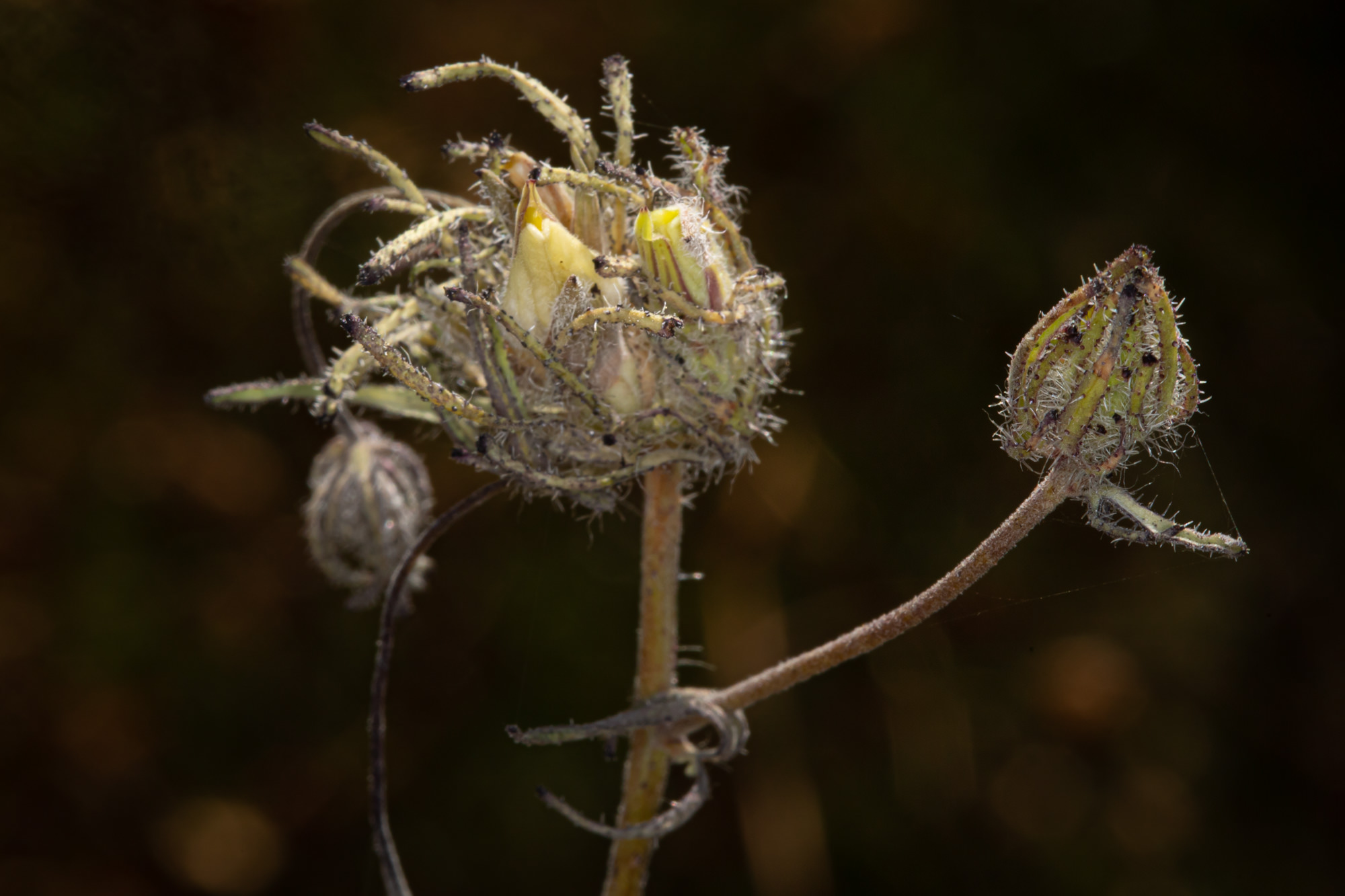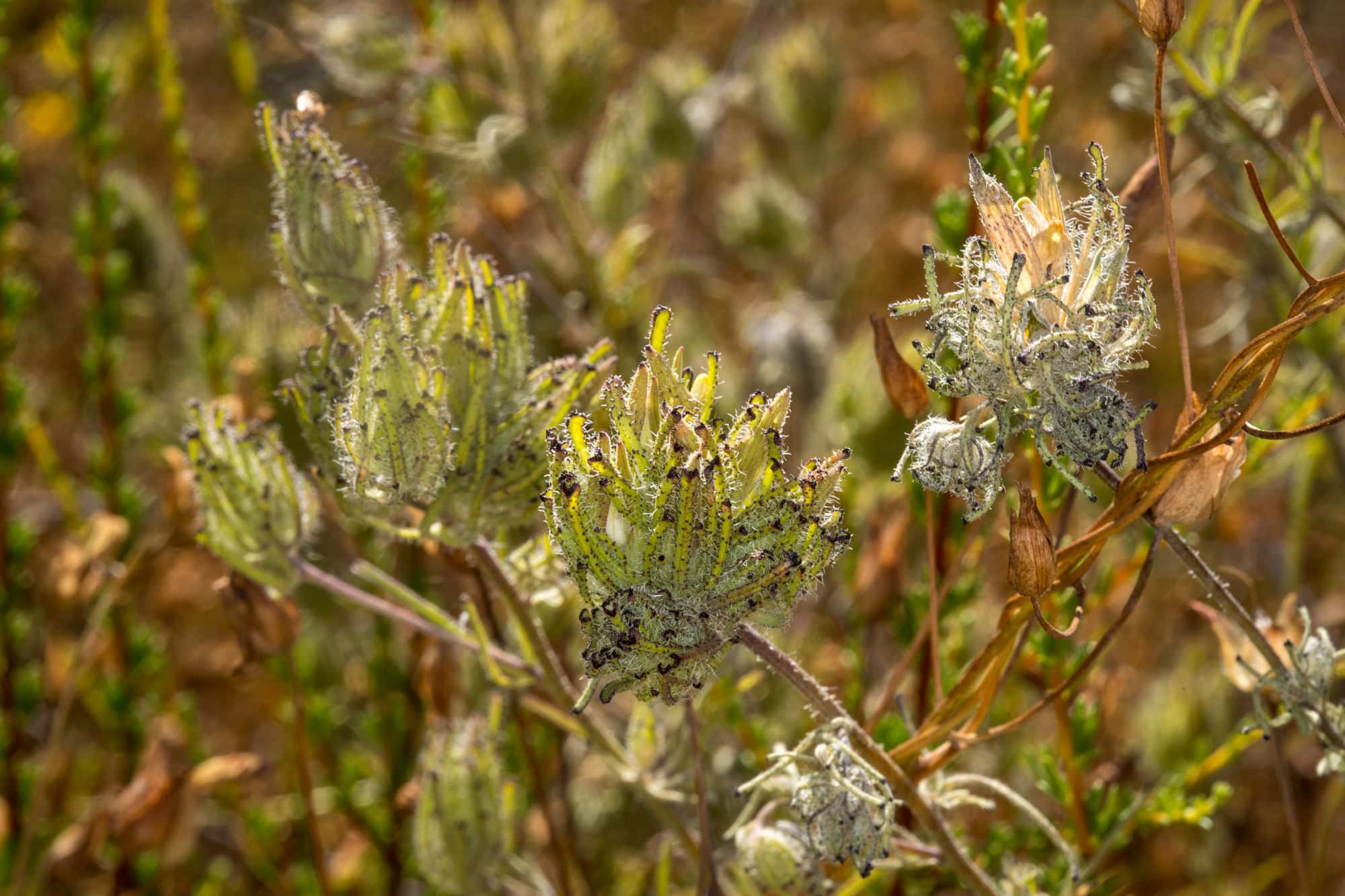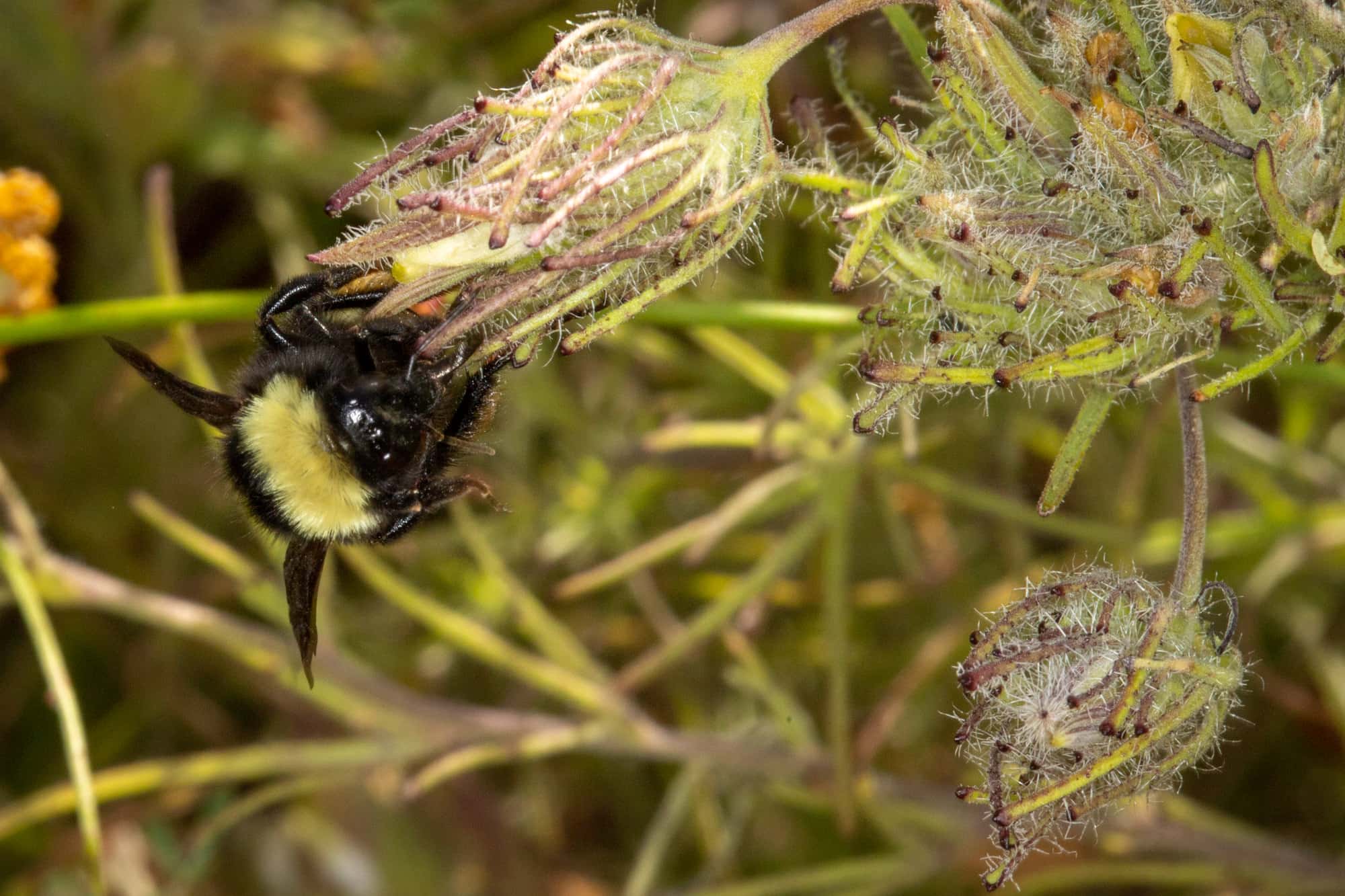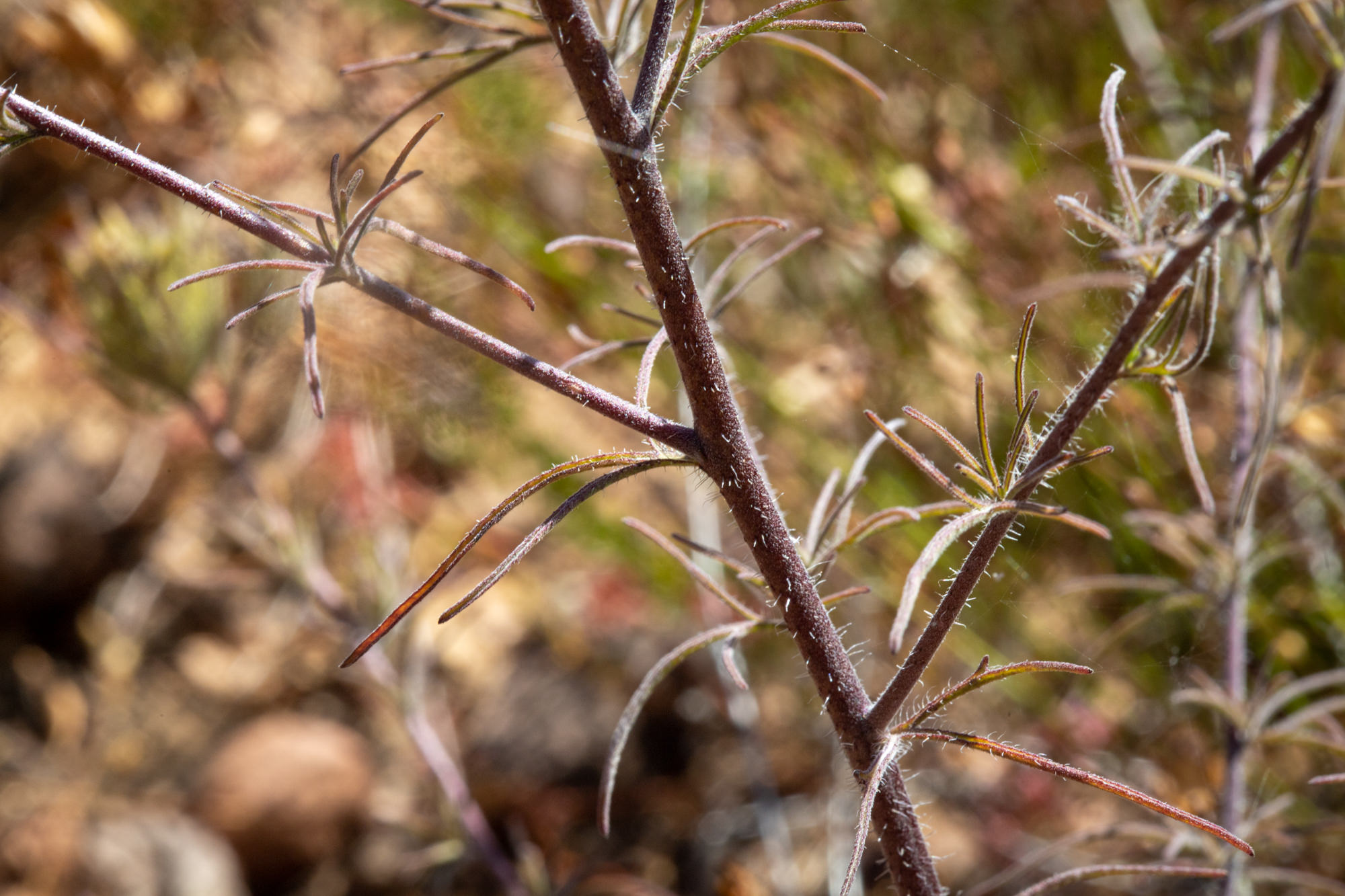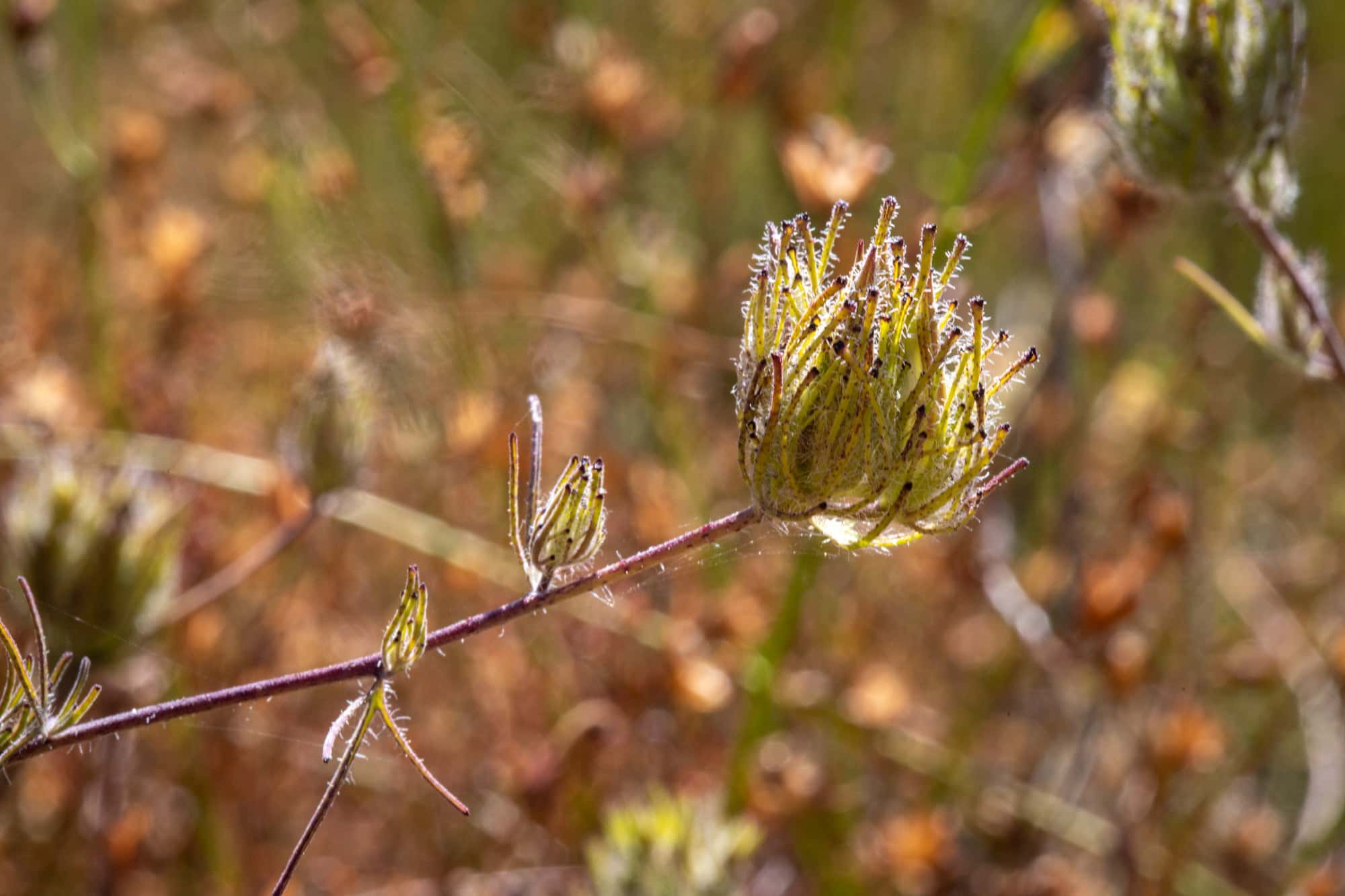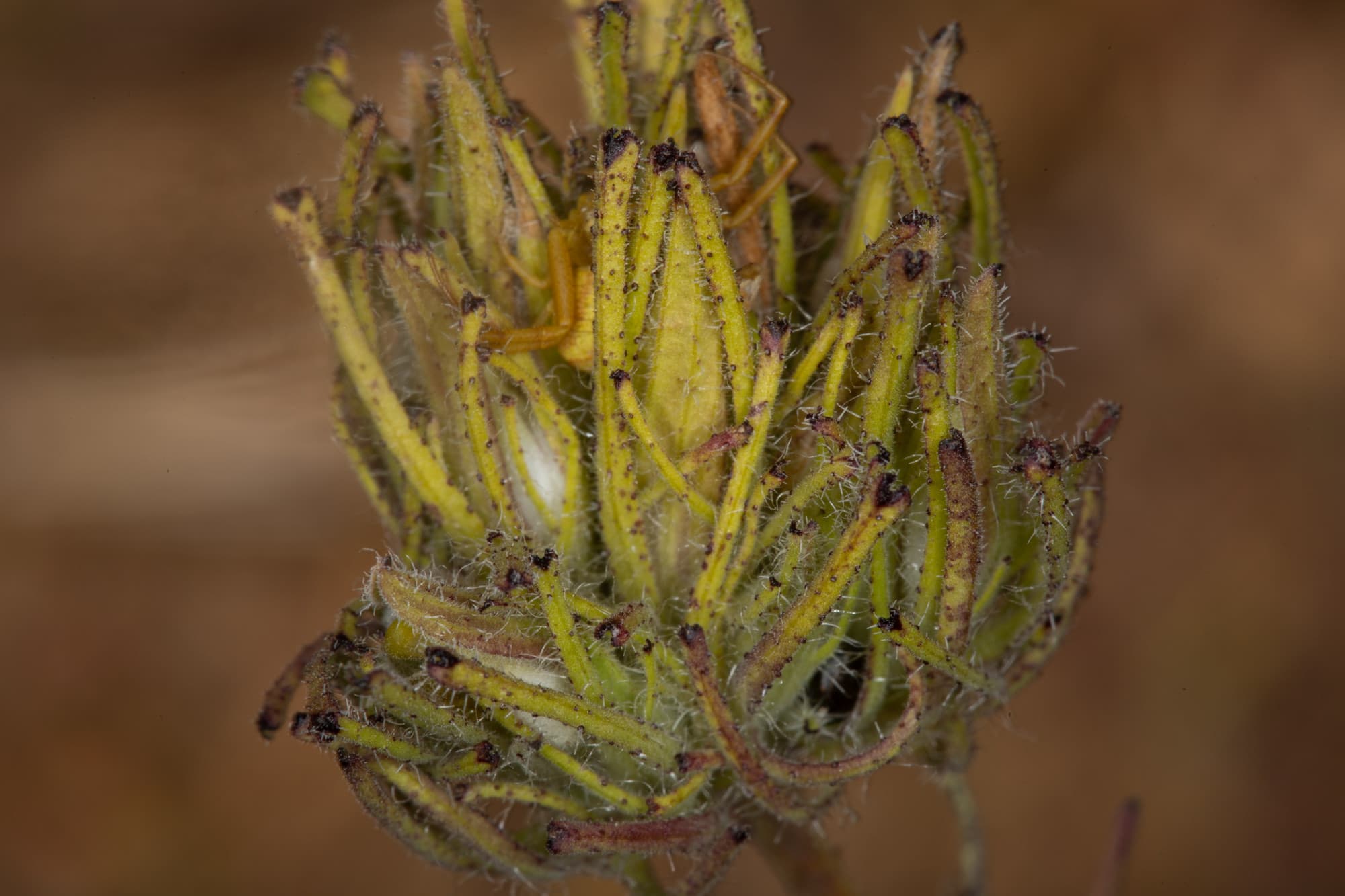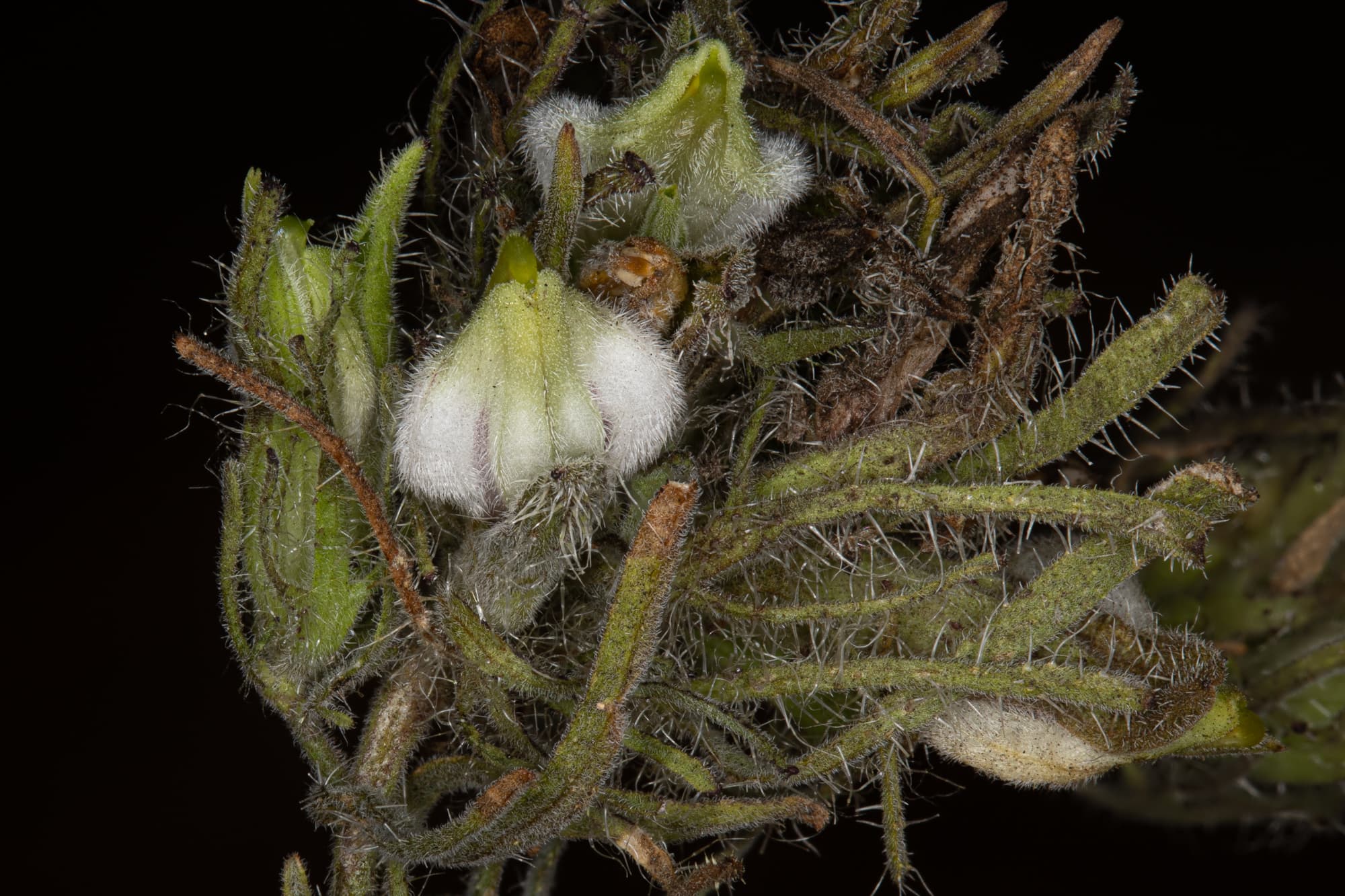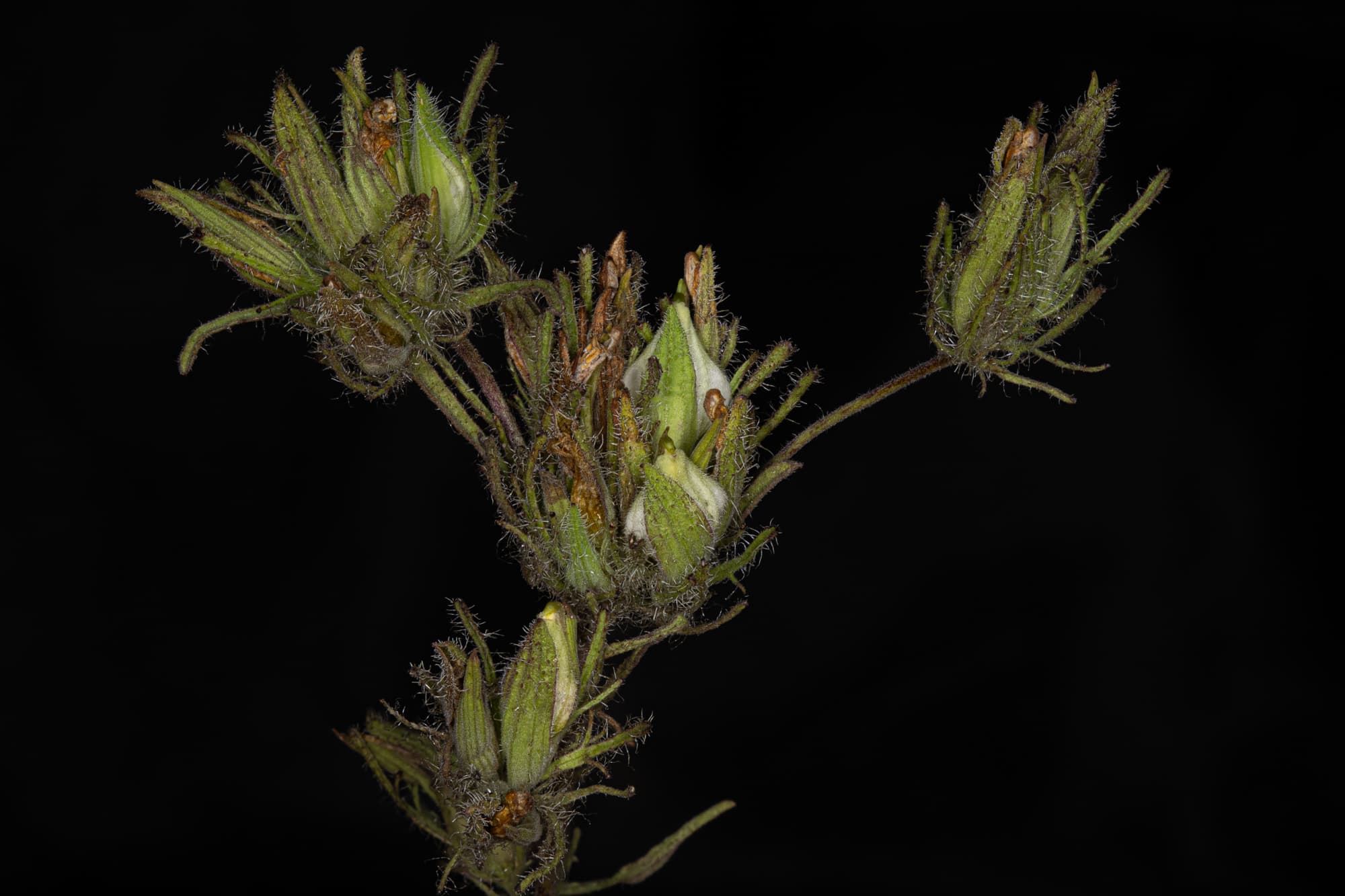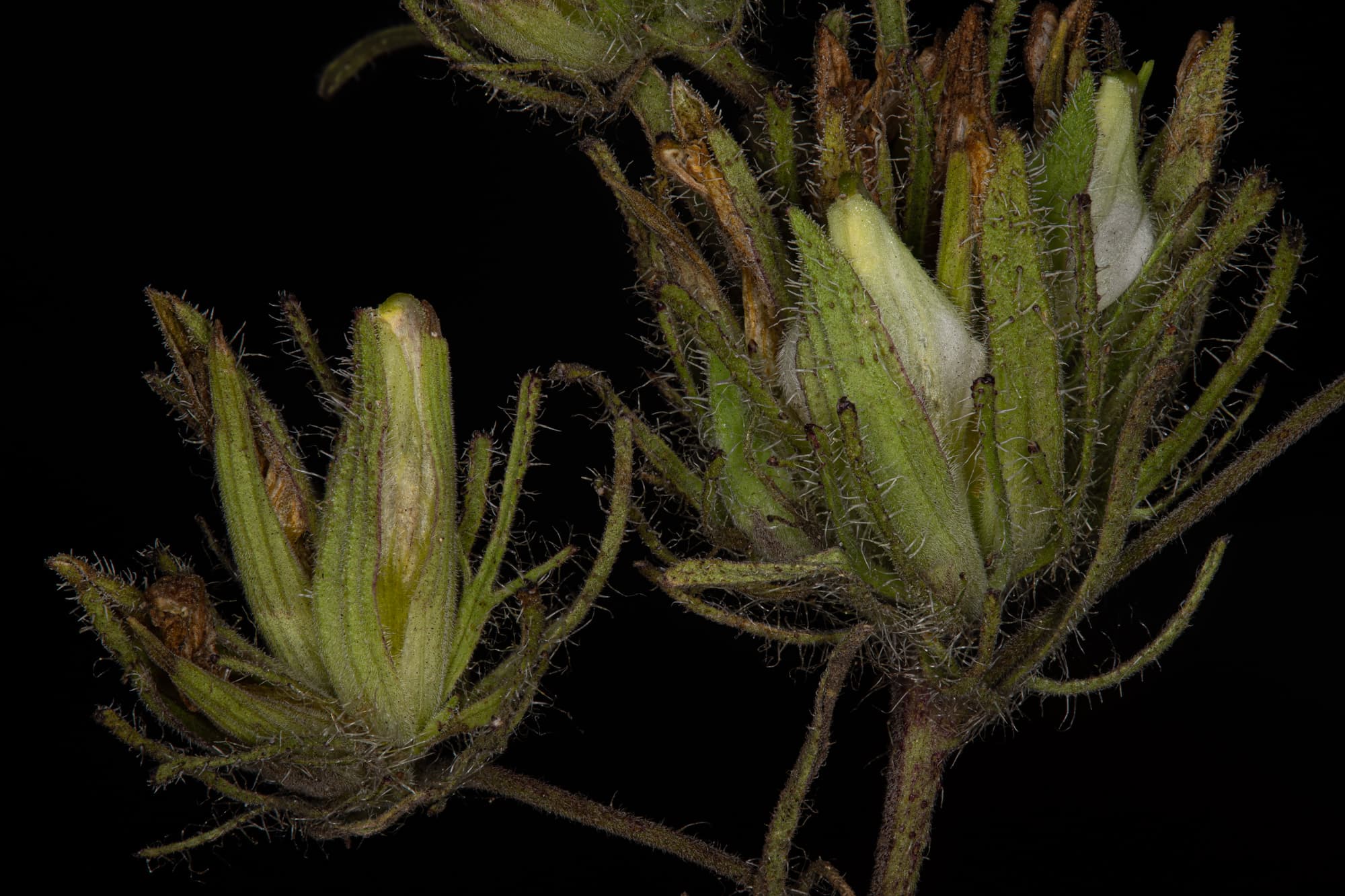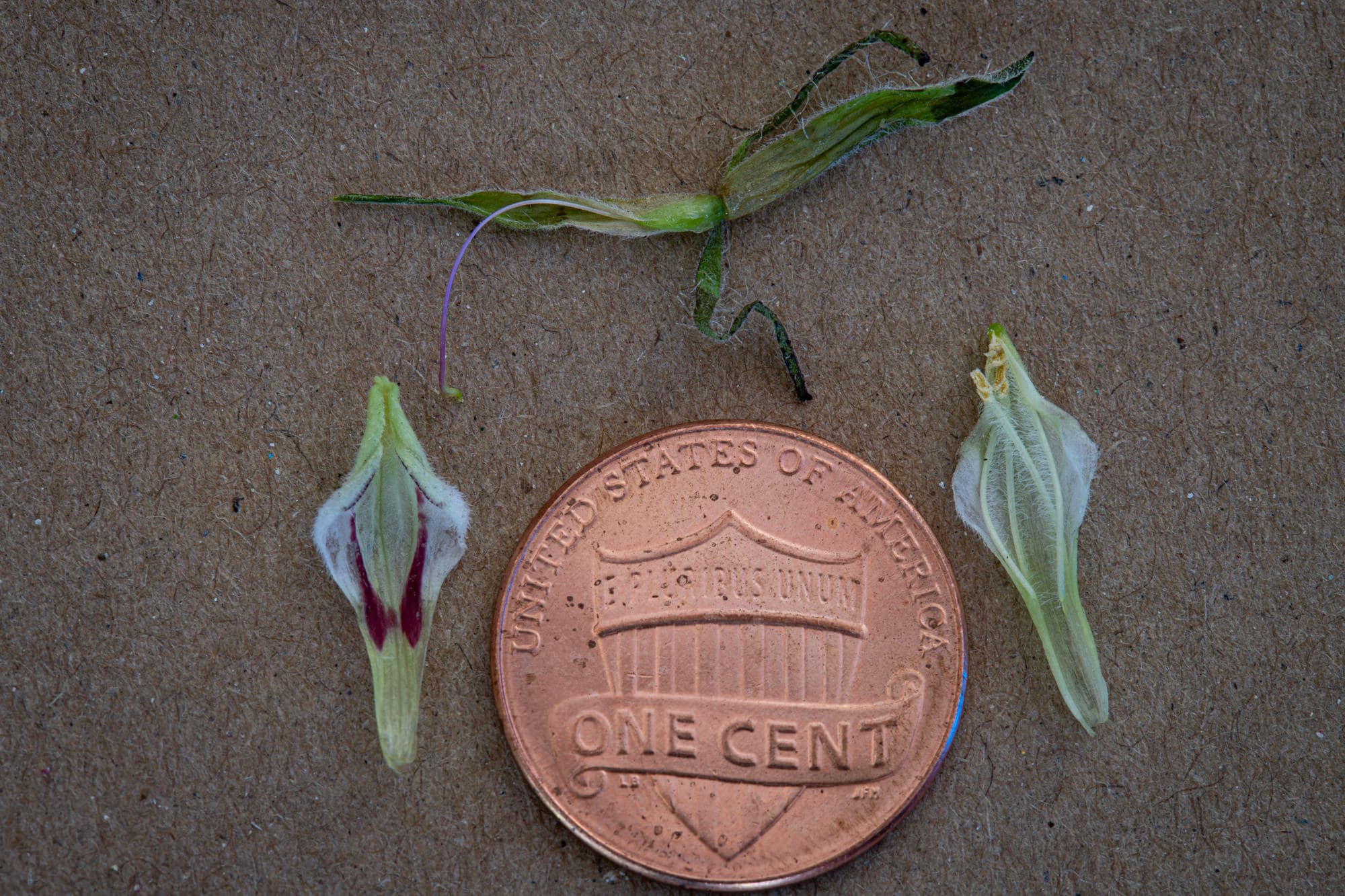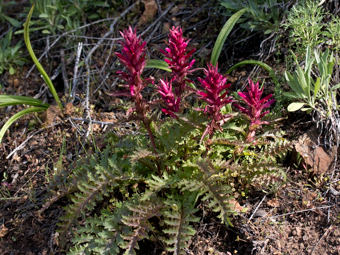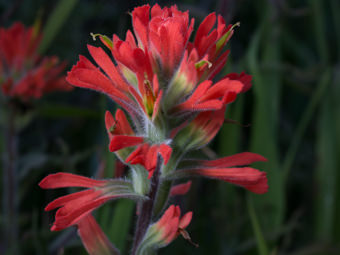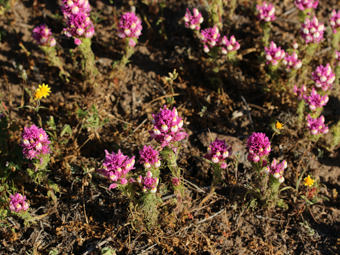Birds Beak
- Cordylanthus rigidus
| Common Name(s): | Birds Beak |
| Scientific Name: | Cordylanthus rigidus |
| Family: | Orobanchaceae (Broomrape) |
| Plant Type: | Annual |
| Size: | 1 to 3 feet |
| Habitat: | open chaparral, coastal sage |
| Blooms: | May to August |
| Fire Response: | Germinate from Seed |
Birds Beak — Cordylanthus rigidus — is one of the those plants that you have walked by dozens of times without realizing that it was in actuality a flowering annual in the same family as Indian Paintbrush and Owls Clover. With that piece of knowledge, take a look at the included images and look for the common traits in the flowers: similar shaped bilateral flowers and the reproductive parts of the individual flowers require a pollinator to open the flower. Additionally, this plant is also somewhat parasitic like its cousins. This plant is endemic to California, blooms from May to August and color can be yellow-green or red-tinged. Height of the plant varies from 1 to 3 feet (0.91 meters). For such a demure looking plant, it can be a favorite for native bees. You might find yourself wondering what the bees are doing on a plant that seems to have no visible flowers. This plant may be that “hole in the wall” restaurant — a reliable source of food but not much to look at. The common name comes from the resemblance of the flower to a bird’s beak. Gently squeeze the petals from the sides to open the flower and you can visualize a baby bird poking its head up out of a nest to be fed.
Preferred niche: places that were previously underwater a long time ago! Sand deposits or elevated terraces with sandy soils — Trancas Canyon along the Backbone Trail or Upper Solstice Canyon are good places among many to see this plant. The sunny parts of the trail are likely spots. Other preferred locations are at the edges of oak woodland where the soil is sandy or loose. Birds Beak attaches itself to the roots of other annual plants. This source of nutrients is thought to be linked to the height of the plants and even the color. Birds Beak plants that do not have to produce chlorophyl tend to be reddish.
White or light yellow flowers are covered in hair occurs in clusters with one outer leaf-like bract per flower. The inner bract further guards the corolla. The linear leaves alternate on the stem and widen towards the tip — they are often curled along the edge and are hairy. There are usually 4-10 flowers per cluster — you are going to have to look hard to find the actual flowers! The 2-lipped corolla is shaped like a bird's beak. Four stamens and 1 pistil, style bent near lip and an ovary that is considered superior. The flower is surrounded by bristly leaves that seem to obscure the flowers from passerby.
Link to Calflora.net - the best source of this fascinating information
Cordylanthus: from two Greek words cordule, "club," and anthos, "flower." The genus Cordylanthus was published by Thomas Nuttall in 1846. (ref. genus Cordylanthus)
rigida/rigidum/rigidus: rigid, referring to the stiff leaves.
Contributed by George Sherman
Featured Plants in the Orobanchaceae (Broomrape) Family:
Last modified: August 21 2024 15:18:59.
Number of Images: 12
Image Size Total: 2,832,972
References:
Wildflowers of the Santa Monica Mountains, by Milt McAuleyFlowering Plants: The Santa Monica Mountains, Coastal and Chaparral Regions of Southern California, by Nancy Dale
Chumash Ethnobotany: Plant Knowledge Among the Chumash People, by Jan Timbrook
Leaf Shapes Primer - Botanical Terms for Leaves: - Link


